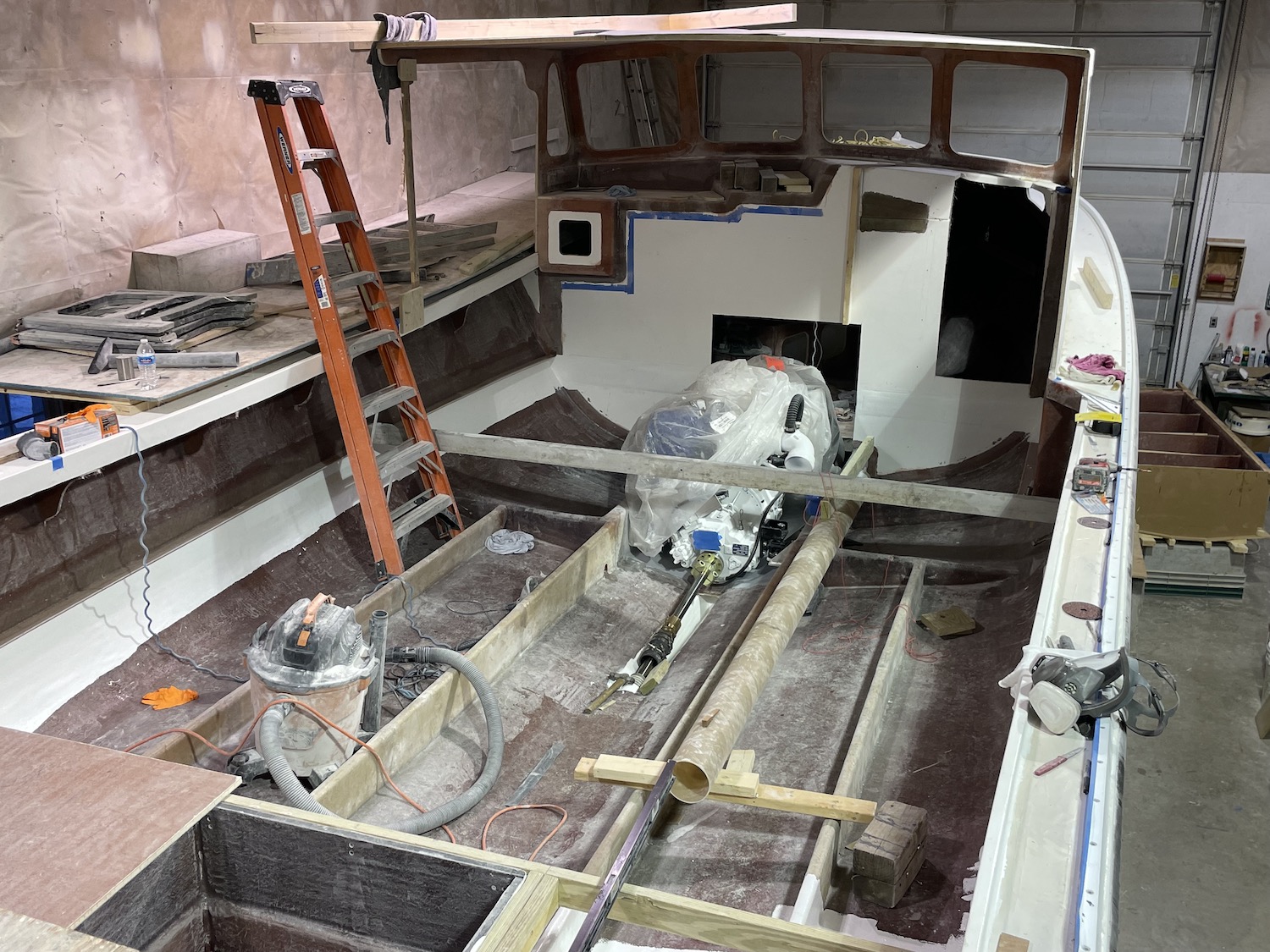Dana’s Boatshop on Maine’s Westport Island is building a lobster boat for a fisherman in Kennebunk, Maine, based on a fiberglass Wayne Beal 36 hull. Building the 36’x13’6” boat commenced last spring after Dana Faulkingham and his son, Jason, reconditioned the Wicked Wendy, an RP40 lobster boat that had been built in 2006.
Work on the Wayne Beal 36 got bogged down because “we never got the engine and transmission until September,” says Faulkingham., “It was all tied up in the covid stuff. So had to keep waiting and waiting.” Although just because the 450-hp Cummins and its transmission finally arrived in September didn’t mean it would immediately go into the boat, because Dana and Jason are lobstering in September.
This 36-foot lobster boat has a design element that Faulkingham never had to work into one of his lobster boats.
“It’s what I call left-handed,” he says, meaning the hauling station is on the port side, not the starboard, which is where it is on almost every other Maine lobster boat. “I only know of one other,” he says, and that’s on a lobster boat working out of the nearby Sheepscot River.
Of course, a lefthand hauling station means the companionway into the forward cabin is on the starboard side. On the transom will be an aluminum platform with a trap rack.
The deck is being built with a combination of traditional and newer technologies. There’s pressure treated framing under a fiberglassed plywood deck. That’s the traditional part.
Then over the plywood was glued a layer of half-inch rubber decking. The rubber decking is the more recent technology for lobster boats, and it is becoming increasing popular, probably because the “boat is quieter, nothing is slippery and it stands up really well,” says Faulkingham.
Rubber decking basically comes in two styles: the rubber that Faulkingham put on the Wayne Beal 36, which comes in 4-foot rolls, and single tiles that are also glued to the plywood deck.
Faulkingham, who has also installed the rubber tiles, feels the 4-foot rubber rolls “are probably the better way to go because you don’t have all those seams (as when rubber tiles are glued down), only longitudinal seams” that are 4 feet apart.







